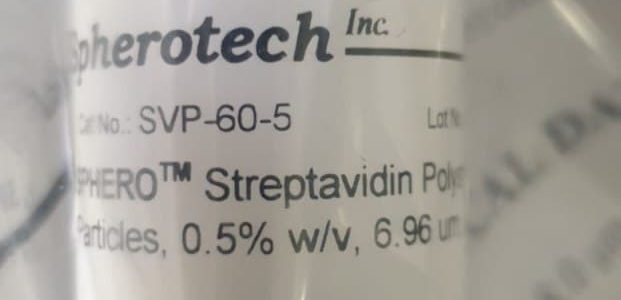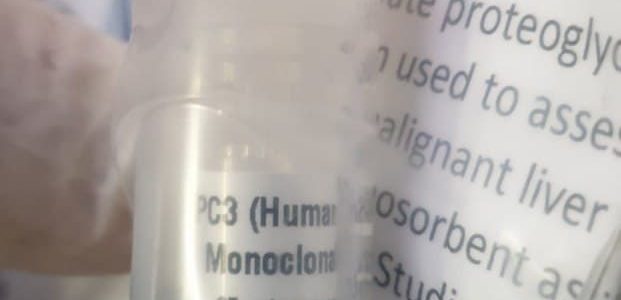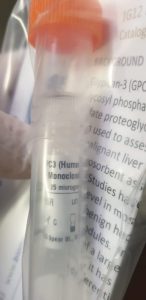Sub-Saharan Africa was traditionally thought-about an animal influenza chilly spot, with solely sporadic extremely pathogenic H5 outbreaks detected over the past 20 years. However, in 2017, low pathogenic avian influenza A(H9N2) viruses had been detected in poultry in Sub-Saharan Africa. Molecular, phylogenetic, and antigenic characterization of isolates from Benin, Togo, and Uganda confirmed that they belonged to the G1 lineage. Isolates from Benin and Togo clustered with viruses beforehand described in Western Africa, whereas viruses from Uganda had been genetically distant and clustered with viruses from the Middle East. Viruses from Benin exhibited decreased cross-reactivity with these from Togo and Uganda, suggesting antigenic drift related to diminished replication in Calu-Three cells.
The viruses exhibited mammalian adaptation markers just like these of the human strainCigarette smoking is a serious threat issue for lung most cancers improvement and development; nevertheless, the mechanism of how cigarette smoke prompts signaling pathways in selling most cancers malignancy stays to be established. Herein, we aimed to find out the contribution of a signaling protein, myristoylated alanine-rich C kinase substrate (MARCKS), in smoke-mediated lung most cancers. We firstly examined the degrees of phosphorylated MARCKS (phospho-MARCKS) in smoke-exposed human lung most cancers cells and specimens in addition to non-human primate airway epithelium.
Next, the MARCKS-interactome and its gene networks had been recognized. We additionally used genetic and pharmacological approaches to confirm the performance and molecular mechanism of smoke-induced phospho-MARCKS. We noticed that MARCKS turns into activated in airway epithelium and lung most cancers cells in response to cigarette smoke. Functional proteomics revealed MARCKS protein instantly binds to NF-κB-activating protein (NKAP). Following MARCKS phosphorylation at ser159 and ser163, the MARCKS-NKAP interplay was inhibited, resulting in the activation of NF-κB signaling.
In a display of two cohorts of lung most cancers sufferers, we confirmed that phospho-MARCKS is positively correlated with phospho-NF-κB (phospho-p65), and poor survival. Surprisingly, smoke-induced phospho-MARCKS upregulated the expression of pro-inflammatory cytokines, epithelial-mesenchymal transition, and stem-like properties. Conversely, focusing on of MARCKS phosphorylation with MPS peptide, a selected MARCKS phosphorylation inhibitor, suppressed smoke-mediated NF-κB signaling exercise, pro-inflammatory cytokines expression, aggressiveness and stemness of lung most cancers cells. Our outcomes recommend that phospho-MARCKS is a novel NF-kB activator in smoke-mediated lung most cancers development and present a promising molecular mannequin for growing new anticancer methods.
Rapid choice response to ethanol in Saccharomyces eubayanus emulates the domestication course of beneath brewing circumstances
Although the everyday genomic and phenotypic adjustments that characterize the evolution of organisms beneath the human domestication syndrome symbolize textbook examples of fast evolution, the molecular processes that underpin such adjustments are nonetheless poorly understood. Domesticated yeasts for brewing, the place quick technology instances and giant phenotypic and genomic plasticity had been attained in just a few generations beneath choice, are prime examples. To experimentally emulate the lager yeast domestication course of, we created a genetically advanced (panmictic) synthetic inhabitants of a number of Saccharomyces eubayanus genotypes, one of the mother and father of lager yeast.
Then, we imposed a relentless choice regime beneath a excessive ethanol focus in 10 replicated populations throughout 260 generations (6 months) and in contrast them with propagated controls uncovered solely to glucose. Propagated populations exhibited a variety differential of 60% in progress fee in ethanol, largely defined by the proliferation of a single lineage (CL248.1) that competitively displaced all different clones. Interestingly, the result doesn’t require your complete time-course of adaptation, as 4 lineages monopolized the tradition at technology 120. Sequencing demonstrated that de novo genetic variants had been produced in all propagated strains, together with SNPs, aneuploidies, INDELs and translocations.
In addition, the completely different propagated populations confirmed correlated responses resembling the domestication syndrome: genomic rearrangements, quicker fermentation charges, decrease manufacturing of phenolic off-flavours and decrease unstable compound complexity. Expression profiling in beer wort revealed altered expression ranges of genes associated to methionine metabolism, flocculation, stress tolerance and diauxic shift, doubtless contributing to increased ethanol and fermentation stress tolerance in the advanced populations. Our examine reveals that experimental evolution can rebuild the brewing domestication course of in ‘quick movement’ in wild yeast, and additionally gives a robust software for learning the genetics of the variation course of in advanced populations.
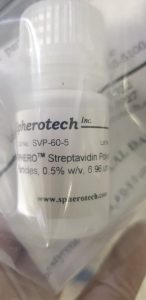
The mitogenome of Ophidascaris wangi remoted from snakes in China
Different species of the genus Ophidascaris (Baylis, 1921; Nematoda: Ascaridida, Ascaridoidea) are intestinal parasites of varied snake species. More than 30 Ophidascaris species have been reported worldwide; nevertheless, few molecular genetic research have been performed on this genus. We sequenced the whole mitogenome of Ophidascaris wangi parasitizing two snake species of the household Colubridae, i.e., Elaphe carinata (Günther, 1864) and Dinodon rufozonatum. The mitogenome sequence of O. wangi was roughly 14,660 base pairs (bp) lengthy and encoded 36 genes, together with 12 protein-coding genes (PCGs), 2 ribosomal RNA (rRNA) genes, and 22 switch RNA genes.
Gene association, genome content material, and transcription route had been in line with these in Toxascaris leonina (Linstow, 1902; Ascaridida: Ascarididae). Phylogenetics of O. wangi and different ascaridoids had been reconstructed based mostly on the concatenated amino acid sequences of 12 PCGs, and on nucleotide sequences of 12 PCGs and two rRNA genes. Phylogenetic analyses had been carried out utilizing most probability and Bayesian inference strategies, and the outcomes prompt that O. wangi constitutes a sister clade of Ascaris, Parascaris, Baylisascaris, and Toxascaris inside the household Ascarididae, which is a sister clade of Toxocaridae.
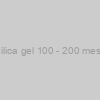 Silica gel 100 - 200 mesh |
|
GRM7479-500G |
EWC Diagnostics |
1 unit |
EUR 11.47 |
|
Description: Silica gel 100 - 200 mesh |
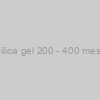 Silica gel 200 - 400 mesh |
|
GRM7481-500G |
EWC Diagnostics |
1 unit |
EUR 12.81 |
|
Description: Silica gel 200 - 400 mesh |
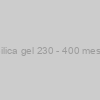 Silica gel 230 - 400 mesh |
|
GRM7484-500G |
EWC Diagnostics |
1 unit |
EUR 13.6 |
|
Description: Silica gel 230 - 400 mesh |
) Silica Gel Grade 40 -6+12 Mesh (1680-3350 microns) |
|
S02572 |
Pfaltz & Bauer |
250G |
EUR 138.5 |
 Silica Gel 60, spherical, neutral |
|
30511-22 |
NACALAI TESQUE |
25KG |
EUR 1540 |
 Silica Gel 60, spherical, neutral |
|
30511-35 |
NACALAI TESQUE |
500G |
EUR 57.4 |
 Silica Gel 60, spherical, neutral |
|
30518-81 |
NACALAI TESQUE |
1KG |
EUR 66.5 |
 Silica Gel 60, spherical, neutral |
|
30518-94 |
NACALAI TESQUE |
100G |
EUR 17.5 |
 Silica gel |
|
GRM151-1KG |
EWC Diagnostics |
1 unit |
EUR 11.28 |
|
Description: Silica gel |
 Silica gel |
|
GRM151-500G |
EWC Diagnostics |
1 unit |
EUR 6.93 |
|
Description: Silica gel |
 Silica gel |
|
GRM151-5KG |
EWC Diagnostics |
1 unit |
EUR 50.46 |
|
Description: Silica gel |
 Silica gel H |
|
GRM602-500G |
EWC Diagnostics |
1 unit |
EUR 10.29 |
|
Description: Silica gel H |
 Silica gel GF 254 |
|
GRM367-500G |
EWC Diagnostics |
1 unit |
EUR 64.32 |
|
Description: Silica gel GF 254 |
 Drying Reagent, Silica Gel |
|
DSG110 |
Bio Basic |
1Kg |
EUR 91.32 |
|
|
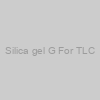 Silica gel G For TLC |
|
GRM7480-500G |
EWC Diagnostics |
1 unit |
EUR 10.87 |
|
Description: Silica gel G For TLC |
 Silica gel HF 254 For TLC |
|
GRM7482-500G |
EWC Diagnostics |
1 unit |
EUR 70.56 |
|
Description: Silica gel HF 254 For TLC |
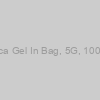 Silica Gel In Bag, 5G, 100/Pk |
|
DSG111 |
Bio Basic |
1PK, 100UNIT |
EUR 73.57 |
|
|
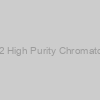 Silica Gel Grade 12 High Purity Chromatographic Gel 28-20 |
|
S02571 |
Pfaltz & Bauer |
1KG |
EUR 163.9 |
 Silica Gel Grade 923 High Purity Chromatographic_x000D_ |
|
S02578 |
Pfaltz & Bauer |
100G |
EUR 278.15 |
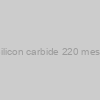 Silicon carbide 220 mesh |
|
GRM7487-1KG |
EWC Diagnostics |
1 unit |
EUR 84.04 |
|
Description: Silicon carbide 220 mesh |
 Silicon carbide 220 mesh |
|
GRM7487-250G |
EWC Diagnostics |
1 unit |
EUR 24.12 |
|
Description: Silicon carbide 220 mesh |
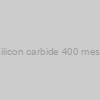 Silicon carbide 400 mesh |
|
GRM7488-1KG |
EWC Diagnostics |
1 unit |
EUR 70.04 |
|
Description: Silicon carbide 400 mesh |
 Silicon carbide 400 mesh |
|
GRM7488-250G |
EWC Diagnostics |
1 unit |
EUR 18.94 |
|
Description: Silicon carbide 400 mesh |
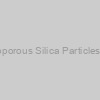 DiagNano™ SBA-15 Mesoporous Silica Particles, 100 μm, 120 A Pore Size |
|
DNG-GS383 |
Creative Diagnostics |
5 g |
EUR 960 |
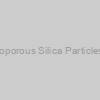 DiagNano™ SBA-15 Mesoporous Silica Particles, 100 μm, 60 A Pore Size |
|
DNG-GS380 |
Creative Diagnostics |
5 g |
EUR 960 |
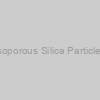 DiagNano™ SBA-16 Mesoporous Silica Particles, 10 μm, 60 A Pore Size |
|
DNG-GS384 |
Creative Diagnostics |
5 g |
EUR 960 |
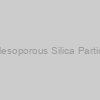 DiagNano™ Amine SBA-15 Mesoporous Silica Particles, 100 μm, 120 A Pore Size |
|
DNG-GS391 |
Creative Diagnostics |
5 g |
EUR 1160 |
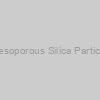 DiagNano™ Thiol SBA-15 Mesoporous Silica Particles, 100 μm, 120 A Pore Size |
|
DNG-GS397 |
Creative Diagnostics |
5 g |
EUR 1160 |
 Silica Gel, self-indicating, orange to colourless, 4 - 8 mm beads, cobalt free |
|
GE9411-1 |
Glentham Life Sciences |
1 |
EUR 60.1 |
|
|
 Silica Gel, self-indicating, orange to colourless, 4 - 8 mm beads, cobalt free |
|
GE9411-1KG |
Glentham Life Sciences |
1 kg |
EUR 109.2 |
 Silica Gel, self-indicating, orange to colourless, 4 - 8 mm beads, cobalt free |
|
GE9411-500 |
Glentham Life Sciences |
500 |
EUR 35.5 |
|
|
 Silica Gel, self-indicating, orange to colourless, 4 - 8 mm beads, cobalt free |
|
GE9411-500G |
Glentham Life Sciences |
500 g |
EUR 79.2 |
 Silicon nitride -325 or -2500 mesh sizes |
|
S02660 |
Pfaltz & Bauer |
10G |
EUR 162.21 |
 plates (10 pcs)) Foil pouch and silica gel pack for storage of microtitre (ELISA) plates (10 pcs) |
|
100191 |
BioServUK |
10 pcs |
EUR 22 |
|
Description: Foil pouch and silica gel pack for storage of microtitre (ELISA) plates (10 pcs) |
 DiagNano™ Amine SBA-15 Mesoporous Silica Particles, 100 μm, 60 A Pore Size |
|
DNG-GS388 |
Creative Diagnostics |
5 g |
EUR 1160 |
 DiagNano™ Amine SBA-16 Mesoporous Silica Particles, 10 μm, 60 A Pore Size |
|
DNG-GS392 |
Creative Diagnostics |
5 g |
EUR 1160 |
 DiagNano™ Thiol SBA-15 Mesoporous Silica Particles, 100 μm, 60 A Pore Size |
|
DNG-GS394 |
Creative Diagnostics |
5 g |
EUR 1160 |
 DiagNano™ Thiol SBA-16 Mesoporous Silica Particles, 10 μm, 60 A Pore Size |
|
DNG-GS398 |
Creative Diagnostics |
5 g |
EUR 1160 |
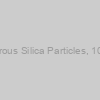 DiagNano™ SBA-15 Mesoporous Silica Particles, 100 μm, 60 A Pore Size, Pellets |
|
DNG-GS385 |
Creative Diagnostics |
5 g |
EUR 1160 |
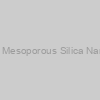 DiagNano™ Plain Mesoporous Silica Nanoparticles, 50 nm |
|
WHM-23DN23 |
Creative Diagnostics |
5 mL |
EUR 1160 |
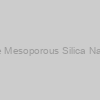 DiagNano™ Amine Mesoporous Silica Nanoparticles, 50 nm |
|
WHM-23DN25 |
Creative Diagnostics |
5 mL |
EUR 1220 |
 DiagNano™ Thiol Mesoporous Silica Nanoparticles, 50 nm |
|
WHM-23DN29 |
Creative Diagnostics |
5 mL |
EUR 1600 |
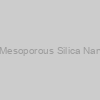 DiagNano™ Plain Mesoporous Silica Nanoparticles, 100 nm |
|
WHM-23DN41 |
Creative Diagnostics |
5 mL |
EUR 1160 |
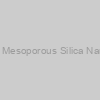 DiagNano™ Amine Mesoporous Silica Nanoparticles, 100 nm |
|
WHM-23DN43 |
Creative Diagnostics |
5 mL |
EUR 1220 |
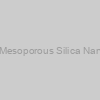 DiagNano™ Thiol Mesoporous Silica Nanoparticles, 100 nm |
|
WHM-23DN47 |
Creative Diagnostics |
5 mL |
EUR 1600 |
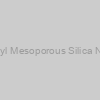 DiagNano™ Carboxyl Mesoporous Silica Nanoparticles, 50 nm |
|
WHM-23DN24 |
Creative Diagnostics |
5 mL |
EUR 1220 |
 DiagNano™ Carboxyl Mesoporous Silica Nanoparticles, 100 nm |
|
WHM-23DN42 |
Creative Diagnostics |
5 mL |
EUR 1220 |
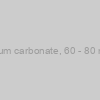 Cesium carbonate, 60 - 80 mesh |
|
abx185375-500g |
Abbexa |
500 g |
EUR 427.2 |
|
|
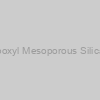 DiagNano™ PEG Carboxyl Mesoporous Silica Nanoparticles, 50 nm |
|
WHM-23DN26 |
Creative Diagnostics |
5 mL |
EUR 1600 |
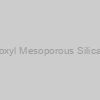 DiagNano™ PEG Carboxyl Mesoporous Silica Nanoparticles, 100 nm |
|
WHM-23DN44 |
Creative Diagnostics |
5 mL |
EUR 1600 |
 DiagNano™ Mesoporous Silica Coated Upconverting Nanoparticles, 365 nm |
|
DNL-S006 |
Creative Diagnostics |
10 mg |
EUR 1780 |
 DiagNano™ Mesoporous Silica Coated Upconverting Nanoparticles, 475 nm |
|
DNL-S007 |
Creative Diagnostics |
10 mg |
EUR 1780 |
 DiagNano™ Mesoporous Silica Coated Upconverting Nanoparticles, 545 nm |
|
DNL-S008 |
Creative Diagnostics |
10 mg |
EUR 1780 |
 DiagNano™ Mesoporous Silica Coated Upconverting Nanoparticles, 660 nm |
|
DNL-S009 |
Creative Diagnostics |
10 mg |
EUR 1780 |
 DiagNano™ Mesoporous Silica Coated Upconverting Nanoparticles, 804 nm |
|
DNL-S010 |
Creative Diagnostics |
10 mg |
EUR 1780 |
The mitogenome sequence of O. wangi obtained from the current examine will probably be helpful for future identification of the nematode worms in the genus Ophidascaris and will enhance the understanding of inhabitants genetics, molecular epidemiology, and phylogenetics of ascaridoid nematodes in snakes.

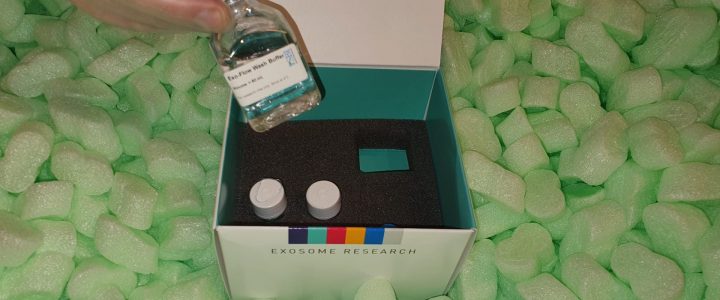
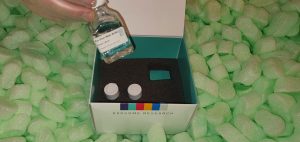
![[Prospects for molecular-genetic support of research on proteolytics in the necrobiome composition] [Prospects for molecular-genetic support of research on proteolytics in the necrobiome composition]](https://osumolgen.org/wp-content/uploads/2021/03/IMG-20201217-WA0091-720x300.jpg)
![[Prospects for molecular-genetic support of research on proteolytics in the necrobiome composition]](https://osumolgen.org/wp-content/uploads/2021/03/IMG-20201217-WA0091-300x142.jpg)
